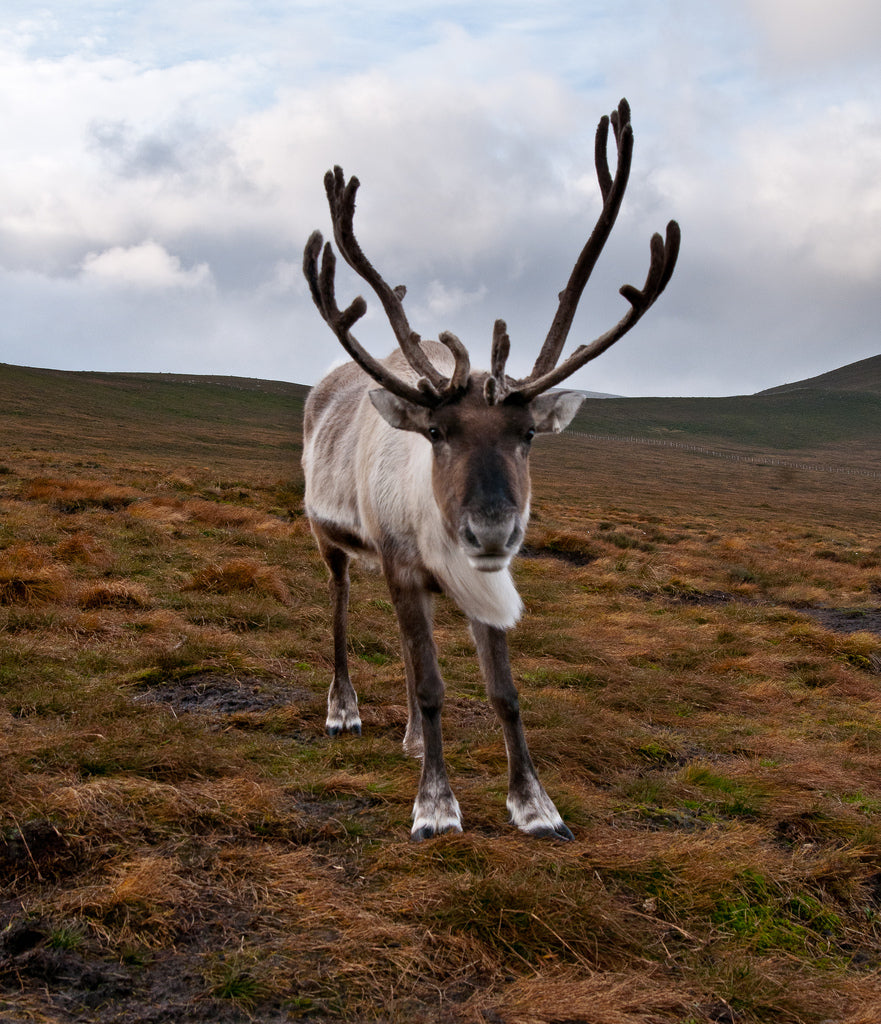To those of us “south of sixty” (degrees latitude), our thoughts about reindeer are more than likely limited to the part they play in the holiday stories we heard as children. But for the Sami reindeer herders of northern Europe, reindeer evoke a multifaceted sense of kinship as profound as any other human-animal bond.

Photo: © Robin McConnell
The Sami are the indigenous people who live in northern parts of Sweden, Norway, Finland, and the Kola Peninsula of Russia. Until recently, they were known as “Lapps” or “Laplanders,” but today they prefer the name Sami. Reindeer have been an important part of Sami culture for thousands of years, during which time they provided meat and milk for sustenance; hides for clothing, shoes, and tents; bones and antlers for tools, weapons, toys, and handcraft; and sinews for sewing. Every part of the animal was used. As livestock, reindeer were also used as draft and pack animals. But above all, the Sami considered reindeer as kindred spirits that shared the harsh yet beautiful northern landscape with them, and gave them life. The Sami’s high regard for reindeer is perhaps most poignantly expressed in one of their creation myths, in which the world was created from the body of a reindeer.
In ancient times, the Sami hunted the reindeer, but for centuries now, they have herded them. Traditionally, Sami reindeer herders followed a nomadic herding practice in which the reindeer roamed free, and the herders followed them on their annual migratory journeys. In the North Sami dialect, the word for reindeer is boazu and the work the reindeer herders do is boazovazzi, which translates to “reindeer walker.” Before technological advances, the herders really were reindeer walkers, often covering hundreds of miles on foot or skis in order to follow the herds. Today, with the use of all-terrain vehicles, GPS, and other forms contemporary technology, reindeer husbandry continues to be a way of life and livelihood for many Sami families. In fact, in Norway and Sweden, reindeer husbandry is legally protected as an indigenous right for people of Sami descent. Consequently, only the Sami can own reindeer.
In recent years, instead of following the reindeer, most Sami herders set up camps along their migration routes. They will spend up to a few weeks at camp, at what is known as the “roundup,” during which they round up their reindeer, check the health and size of their herd, mark the new calves, and harvest the deer they need. Family members of all ages participate in this sacred ritual, and there is often song and celebration. When the roundup is finished, the reindeer are released and once again roam free.
There are popular stories about how the vocabulary of indigenous people often reflects their close relationship to the environment in which they live. As one might expect of a people who live “north of sixty,” the Sami language includes a rich vocabulary for snow and ice, with over 300 terms. But their vocabulary for reindeer is even more impressive, with as many as one thousand terms devoted to the description of reindeer. The Sami have words that describe every detail of a reindeer’s appearance, behavior, movement, personality, habits, and location, as well as the interplay between all these aspects. For example, the word “sietnjanjunni” translates as “a reindeer with the hair nearest to its nostrils having a different color than one would expect in view of the color of the rest of its hair.” Imagine 999 other terms and you just might have a sense of the ancient and profound bond between the reindeer and the reindeer walkers.
The Truth About Rudolf
Reindeer (Rangifer tarandus) are found throughout the circumpolar north, though the subspecies in North America is known as “caribou.” They travel in herds ranging from as few as fifteen to thousands of individuals. Males can weigh as much as 400 pounds, and females up to 250 pounds. They stand three to five feet tall at the shoulder; have thick, insulating coats ranging from dark browns to white; and large hooves that provide traction in the snow. Both the male and female grow antlers. An amusing fun fact about reindeer is that the males shed their antlers in the fall, and the females in the spring. The different times of year during which the males and females shed their antlers means that the legendary reindeer that pull Santa’s sleigh must be female, because only females have antlers in December.
Great Sami Winter Fair
Want to learn more about Sami culture and reindeer husbandry? Plan a trip to the Winter Fair, or Jokkmokk Market, in Swedish Lapland. This winter festival was started over than 400 years ago as a way to support and celebrate Sami culture. The event includes reindeer roundup demonstrations, dogsledding, folk music and folk dancing, films, lectures, and art and handicraft exhibitions. Pack your warmest clothes because temperatures during the festival can drop as low as minus 40 degrees Celsius! Jokkmokk Tourist Office can be reached year round by telephone at: 0971-222 50, or via email at: turist@jokkmokk.se. Visit them online at: www.jokkmokksmarknad.se/home
© 2012 Belinda Recio
First published in Organic Spa Magazine
